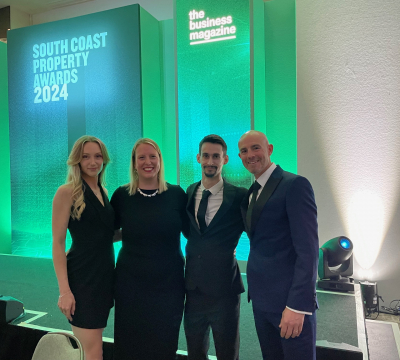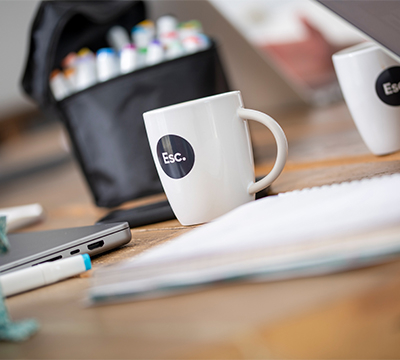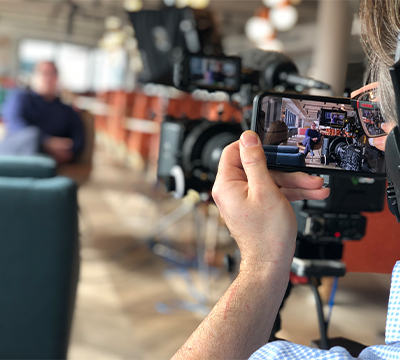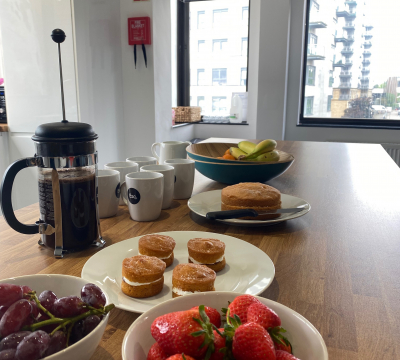
INSIGHTS Top 26 Marketing Acronyms Explained
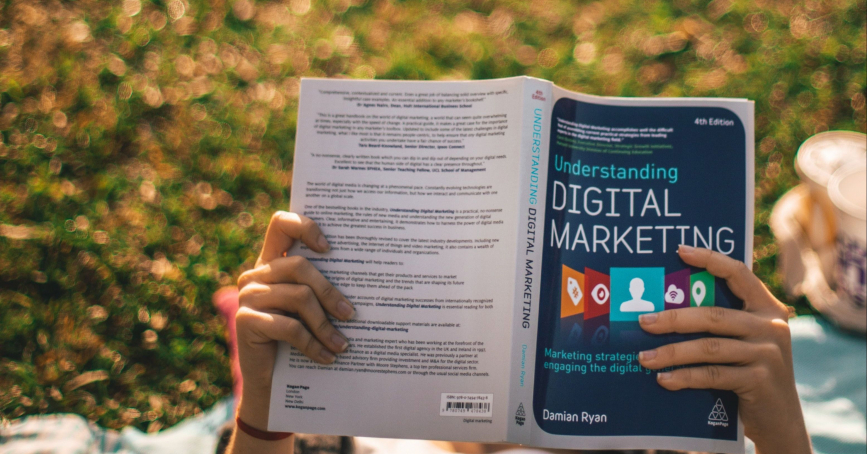
How well do you know your CTRs from your PPCs?
At The Escape we like to keep things simple and try to avoid marketing jargon and acronyms. However, if you’ve ever found yourself Googling under the desk in the middle of a meeting (yup, we’ve all been there), then our quick and handy guide should help!
So here’s our list of the 26 most commonly used marketing acronyms that will have you sounding like a pro in no time.
AM: Account Manager
Usually based within an agency, an AM is responsible for building strong relationships with a portfolio of clients and act as the primary point of contact, ensuring that the agency is delivering on all agreed expectations.
BR: Bounce Rate
Email bounce rate - this is the rate that an email is unable to be delivered to a recipient during an email campaign. A soft bounce is usually temporary and may be due to a full inbox. A hard bounce generally means that the email address is no longer valid and is permanent.
Website bounce rate - this is the percentage of web visitors who land on one of your web pages then leave without visiting any other pages. A high bounce rate can be an indication that the page requires optimising to increase time on site and conversions.
CMS: Content Management System
An invaluable tool for most companies and marketeers, a CMS is a web application that allows non-technical users to create, edit and manage content on a website.
CPA: Cost Per Acquisition or Action
This is a marketing metric that measures online advertising success, based on the cost of a customer converting on their website, such as purchasing a product, or submitting a form.
CPC: Cost Per Click
How much it costs per click when a user clicks on an online advertisement during a PPC campaign.
CPL: Cost Per Lead
This is the cost to your business for each lead generated by a particular campaign.
CR: Conversion Rate
This is based on the percentage of users who complete a desired action or goal/event on your website, such as submitting a form, making a purchase, downloading a white paper. The higher the CR the better.
CRM: Customer Relationship Manager
Almost all companies will use some form of CMS software where they can keep track of all their customer information, such as contact information, sales journey, pipelines, conversation logging etc.
CRO: Conversion Rate Optimisation
A newer acronym to some, this is the process of increasing the opportunity for conversions on your website or app. It can involve improving design, landing pages, CTAs etc, in order to help customers convert.
CTA: Call To Action
One of the most common visual online tools, CTAs are usually in the form of a button, text link or image, that encourage online users to take an action and click as requested, such as ‘Read more’, ‘Email us’, ‘Buy here’,
CTR: Click Through Rate
The ratio of users who clicked on a link to the total number of those who saw it, whether from a web page, advert or email. This can be calculated by the number of clicks divided by the number of impressions (or emails sent), multiplied by 100 to achieve the percentage.
DM: Direct Message or Direct Mail
Direct mail is essentially any advertising material that comes through your letterbox.
Direct message is when someone can send you a private message usually via your social media account.
HTML: Hypertext Markup Language
This is the standard code language used by developers to create and structure a web page and its content.
KPI: Key Performance Indicator
A way of measuring a company's success, KPIs are used by marketers to track an activity’s performance, such as website traffic, social media followers, leads generated etc.
OR: Open Rate
The success of EDMs or email marketing are evaluated using numerous key metrics, the first most obvious one being the percentage of customers who opened it of the total number sent.
PM: Project Manager
Often based within an agency, a PM is responsible for overseeing all aspects of a client project, including managing deadlines, workflow etc, all the way through to completion.
PPC: Pay Per Click
PPC is a digital advertising model where an advertiser pays every time a user clicks on their advert, usually via a search engine or on social media. For example, on Google, if a user searches for a specific keyword that matches what an advertiser has already selected or bid on, then that advertiser will pay if the user clicks on it.
ROI: Return On Investment
This is how the financial success of a campaign is measured, based on the initial amount of money invested, against the net income gained (or lost).
SEM: Search Engine Marketing
This is the process of directing traffic leads to your website using paid advertising on a search engine’s platform. SEM refers to PPC advertising as well as visibility on a SERP.
SEO: Search Engine Optimisation
SEO is the process of getting web pages to rank higher on search engine results such as Google or Bing. This method does not involve ‘paid search’ and is often referred to as ‘organic search’. There is an art and science behind this as search engines look for numerous elements such as keywords, meta descriptions, title tags etc, to determine how they will rank each page.
SERP: Search Engine Results Page
This is the list of results that a search engine will display once a user has typed their search or query. The lower your web page appears on a SERP or if doesn't make it to the first SERP, the less likely someone is to find it.
SLA: Service Level Agreement
An agreement between a company’s sales and marketing teams that lays the foundations for what is expected of each party throughout a project, such as quantity and quality.
SMM: Social Media Marketing
Where business uses social media platforms such as LinkedIn, Facebook or Instagram, to market their products or services to a targeted audience.
UI: User Interface
The definition and difference between UI and UX is a well documented and argued one! Generally speaking, UI focuses on the aesthetic design element of a website or digital product including responsiveness, menu bars, typography, colour, CTA buttons, imagery and animation.
UV: Unique Visitor
Referring to website visitors, this metric only counts the individual visitors, rather than if they have visited more than one during a set time period. i.e. 2,000 users might have visited a website in one day, however, if 500 of them visited twice, then there would only be 1,500 unique visitors.
UX: User Experience
This is a ‘human first’ way of digital designing, with the focus being on the user journey and experience. How easily do they navigate through a website, what’s the quality of the interaction between the user and the website, how does the experience make them feel about the brand?
Share insight
Let's talk
- Call us +44 (0) 1256 334567
If you would like to find out more about how we can help you connect strategically, creatively or digitally, then call us or get in touch. We’d love to hear from you.

